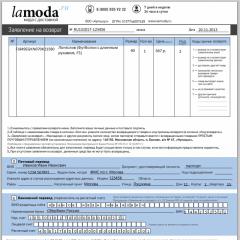Benefits for food service technologists. Food Technology: A Textbook for Bachelors
The textbook examined the theoretical foundations of the technology of catering; processes that shape the quality of products; technologies for the culinary processing of food products, the preparation of semi-finished products, culinary products and dishes at catering establishments. Recommendations are given on the use of culinary products in children's, gerodietetic and special nutrition. For undergraduate students studying in the direction of "Technology of products and the organization of public catering", as well as specialists in the public catering system; Neck: Recommended by the Educational and Methodical Council of the Federal State Budget Educational Establishment of Higher Vocational Education "K.G. Moscow State University of Technology and Management Razumovsky "as a textbook for students studying in the direction of preparing bachelors" Technology of products and the organization of catering "
Year: 2015
Publisher: Dashkov & K Publishing House
Language: russian
Pages: 496
ISBN 13: 978-5-394-02516-7
File: PDF, 3.43 MB
You can write a book review and share your experiences. Other readers will always be interested in your opinion of the books you "ve read. Whether you" ve loved the book or not, if you give your honest and detailed thoughts then people will find new books that are right for them.



Fig. 1.3.The structure of starch grain:
1 - structure of amylose; 2 - structure of amylopectin; 3 - starch grains of raw potatoes; 4 - starch grains of boiled potatoes; 5 - starch grains in raw dough; 6 - starch grains after baking
When heated from 55 to 80 ° C, starch grains absorb a large amount of water, increase in volume several times, lose their crystalline structure, and therefore, anisotropy. Starch suspension turns into a paste. The process of its formation is called gelatinization. Thus, gelatinization is the destruction of the native structure of starch grains, accompanied by swelling.
The temperature at which the anisotropy of most grains is destroyed is called the temperature gelatinization. The gelatinization temperature of different types of starch is not the same. So, gelatinization of potato starch occurs at 55-65 ° С, wheat - at 60-80, corn - at 60-71 °, rice - at 70-80 ° С.
The process of gelatinization of starch grains is carried out in stages:
* at 55-70 ° С the grains increase in volume several times, lose their optical anisotropy, but still maintain a layered structure; a cavity forms in the center of the starch grain (“bubble”); a suspension of grains in water turns into a paste — a low-concentration amylose sol, in which swollen grains are distributed (the first stage of gelatinization);
* when heated above 70 ° C in the presence of a significant amount of water, starch grains increase in volume by a factor of tens, the layered structure disappears, the viscosity of the system increases significantly (the second stage of gelatinization); at this stage, the amount of soluble amylose increases; its solution partially remains in the grain, and partially diffuses into the environment.
With prolonged heating with excess water, starch bubbles burst, and the viscosity of the paste decreases. An example of this in culinary practice is the liquefaction of jelly as a result of excessive heat.
Starch of tuberous plants (potatoes, Jerusalem artichoke) gives transparent gelatinous paste, and cereals (corn, rice, wheat, etc.) - opaque, milky white, pasty consistency.
The consistency of the paste depends on the amount of starch: when its content is from 2 to 5%, the paste is liquid (liquid jelly, sauces, mashed soups); at 6-8% - thick (thick jelly). An even thicker paste forms inside the potato cells, in cereals, pasta dishes.
The viscosity of the paste is affected not only by the concentration of starch, but also by the presence of various food substances (sugars, mineral elements, acids, proteins, etc.). So, sucrose increases the viscosity of the system, salt reduces, proteins have a stabilizing effect on starch paste.
When starch-containing products are cooled, the amount of soluble amylose in them decreases as a result of retrograde (precipitation). In this case, the aging of starch jellies (syneresis) occurs, and the products become stale. The aging rate depends on the type of products, their humidity and storage temperature. The higher the humidity of a dish, a culinary product, the more intensively the amount of water-soluble substances decreases in it. Aging proceeds most rapidly in millet porridge, more slowly in semolina and buckwheat. An increase in temperature slows down the process of retrograde, therefore dishes from cereals and pasta that are stored on food warmers with a temperature of 70-80 ° C have good organoleptic characteristics for 4 hours.
Hydrolysis of starch. Starch polysaccharides can break down to the molecules of their Sugars. This process is called hydrolysis, since it goes with the addition of water. There are enzymatic and acid hydrolysis.
Starch-breaking enzymes are called amylases. There are two types of them:
α-amylase, which causes partial decomposition of starch polysaccharide chains with the formation of low molecular weight compounds - dextrins; with prolonged hydrolysis, the formation of maltose and glucose is possible;
β-amylase, which breaks down starch to maltose.
Enzymatic hydrolysis of starch occurs in the manufacture of yeast dough and baking products from it, cooking potatoes, etc. Wheat flour usually contains β-amylase; maltose, formed under its influence, is a breeding ground for yeast. Α-amylase predominates in flour from germinated grain, and dextrins formed under its influence give the product stickiness and an unpleasant taste.
The degree of hydrolysis of starch under the action)


